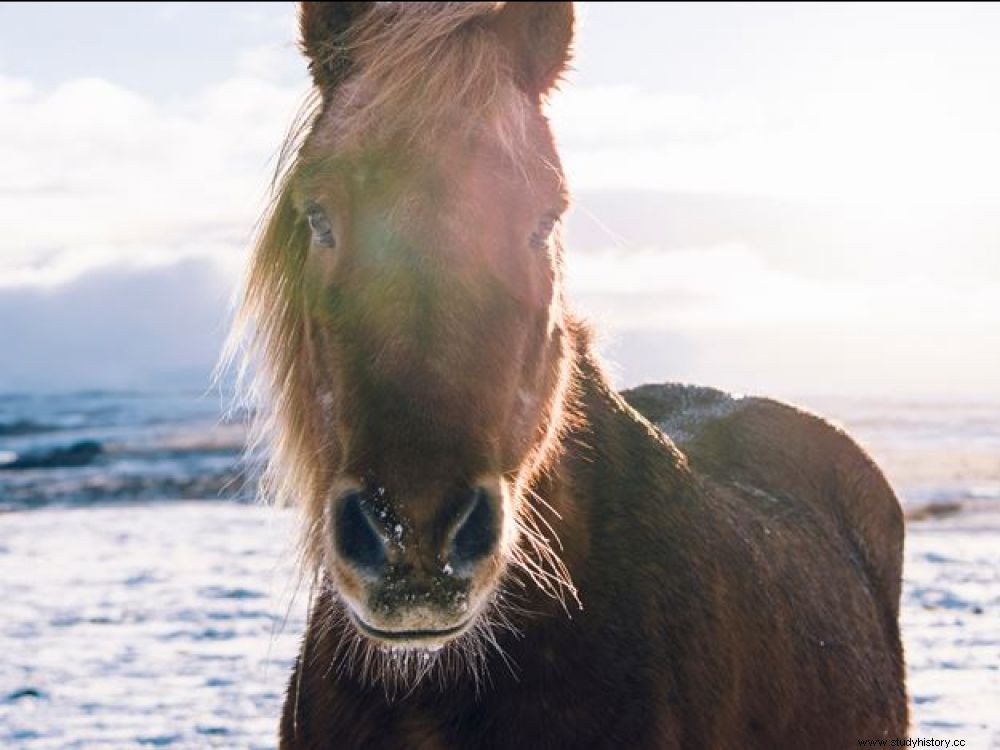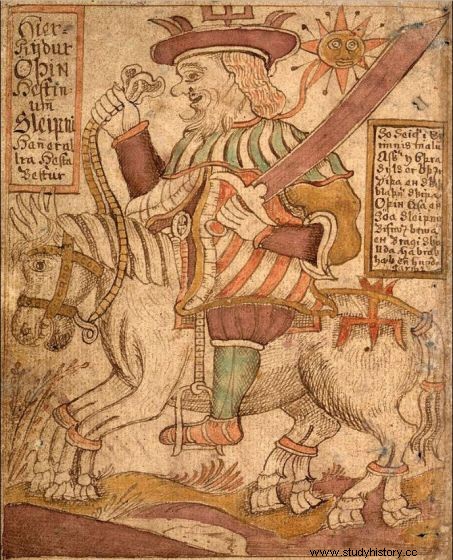Genetic analyzes have revealed that in Viking Age burials in Iceland, the horses buried were all males.

Icelandic horse, descendant of the first equids brought by the Vikings to Iceland, in the 9 th century, when they colonized the island from Norway.
Island of fire and ice, lost in the mists of the North Atlantic between Greenland and Scandinavia, Iceland is gradually revealing its secrets about the first humans who colonized it around 874, a handful of Vikings from Norway. Thus "horse graves" with which the island's elite was buried. An international team, made up of archaeologists and geneticists, has thus sifted through the relics found during the 20th century in 355 tombs scattered over 17 sites in the north and northeast of the volcanic island. Among them, the remains of 175 horses - bones or teeth - kept at the National Museum of Iceland in Reykjavík. She was thus able to establish that they were only male horses, as reported in their work published by the Journal of Archaeological Sciences .
The difficult determination of the sex of horses
Although examination of the pelvis and teeth can usually tell the sex of mounts apart, it has been more difficult for the team – who have been conducting their research since 2011 as part of a global study of the settlement of Iceland. and its funerary rituals (9th century - 11th century) - to do so on incomplete carcasses. It was therefore by analyzing ancient DNA that she was able to determine that the horses buried were all stallions, whole horses, or geldings (castrated animals), in the prime of life, sacrificed to accompany the deceased.
On the other hand, according to the researchers, the bones collected outside the pits were systematically those of mares mixed with reliefs of consumption. Male and female therefore had a different status in the eyes of the Vikings. "The choice of stallions, with the virility and aggressiveness associated with them, may have been a strong symbolic factor conferring status and power ", believe the specialists. Remember that the horse was considered a great psychopomp in Scandinavian mythology, responsible for transporting the souls of the dead to the other world. The animal therefore enjoyed an undeniable prestige. In the Norse sagas, Sleipnir the fabulous horse of Odin carried the god of the vikings everywhere in the air... using its eight legs!
Island of fire and ice, lost in the mists of the North Atlantic between Greenland and Scandinavia, Iceland is gradually revealing its secrets about the first humans who colonized it around 874, a handful of Vikings from Norway. Thus "horse graves" with which the island's elite was buried. An international team, made up of archaeologists and geneticists, has sifted through the relics found during the 20 th century in 355 tombs scattered over 17 sites in the north and northeast of the volcanic island. Among them, the remains of 175 horses - bones or teeth - kept at the National Museum of Iceland in Reykjavík. She was thus able to establish that they were only male horses, as reported in their work published by the Journal of Archaeological Sciences .
The difficult determination of the sex of horses
Although examination of the pelvis and teeth can usually tell the sex of mounts apart, it has been more difficult for the team – who have been conducting their research since 2011 as part of a global study of the settlement of Iceland. and its funerary rituals (9th century - 11th century) - to do so on incomplete carcasses. It was therefore by analyzing ancient DNA that she was able to determine that the horses buried were all stallions, whole horses, or geldings (castrated animals), in the prime of life, sacrificed to accompany the deceased.
On the other hand, according to the researchers, the bones collected outside the pits were systematically those of mares mixed with reliefs of consumption. Male and female therefore had a different status in the eyes of the Vikings. "The choice of stallions, with the virility and aggressiveness associated with them, may have been a strong symbolic factor conferring status and power ", believe the specialists. Remember that the horse was considered a great psychopomp in Scandinavian mythology, responsible for transporting the souls of the dead to the other world. The animal therefore enjoyed an undeniable prestige. In the Norse sagas, Sleipnir the fabulous horse of Odin carried the god of the vikings everywhere in the air... using its eight legs!

Odin riding Sleipnir, as depicted in an Icelandic manuscript from 1765. © Public domain.
"It is striking that these equine remains accompanied almost exclusively middle-aged men and that we found very few graves of women and almost none of infants or children. We do not know under what conditions they were buried “, explain the signatories of the publication.
Ritual killings
Were these submerged in lakes? At sea ? Were they cremated, as in Scandinavia? It is currently impossible to answer these questions. The only certainty:the Icelandic Vikings developed their own funeral customs with the ritual killing of horses. Traces of fractures were observed on the recovered skulls, stigmata of the fatal blow. Sometimes it happened that the animal was also decapitated. Further research should now make it possible to compare the results obtained in Iceland with those concerning the mainland Vikings.
